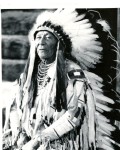Radical Hope: Ethics in the Face of Cultural Devastation is the title of a book I just read, a book I felt compelled to read in light of the current situation in Washington, D.C.

Radical Hope may help.
Like many people, I am dumbfounded that our government could be taken over and co-opted so quickly and so thoroughly by people who do NOT, in any way or shape, represent what I believe in, what I love about this country, what I love about the people who live here.
I am also afraid — for myself in the short-term — but for my child, my grandchildren, my nieces and nephews — and what their lives will be like in a country where you only count if you are white, male and rich.
So, I found and read this small but powerful book. Written by Jonathan Lear, it is an exploration of how the Crow Indian tribe managed to survive in the face of total cultural collapse.
So, what does this slim volume have to say to me, to you, to any of us that could help us out in a country where Donald Trump is President?
Plenty.

Chief Plenty Coups radical vision saved his tribe
The Crow were the only indigenous people who kept their land. They were the only tribe not defeated by the US Army. Their entire strategy for surviving a total and utter cultural collapse was driven by the vision of a 9-year-old child named Plenty Coups.
In his vision, the child who was to become one of the last great Chiefs of this Indian tribe, witnessed the loss of the buffalo, the end of the warrior as the center of the tribe’s life, and the destruction of hundreds of years of nomadic life.
Plenty Coups saw the Four Winds begin a war against the forest, witnessing the loss of all but one tree, the tree housing the lodge of the Chickadee.
The Man-person in Plenty Coups’ dream tells him that the Chickadee is least in strength but has the strongest mind of its kind. It listens. Nothing escapes its ears. The Chickadee never intrudes, never speaks in strange company but also, never misses a chance to learn from others – to gain success and avoid failure. Plenty Coups is to model himself on the Chickadee, to develop his body but not neglect his mind. “It is the mind that leads a man to power…”
From these two visions, the elders of the tribe recognized that the white man would take and hold the plains, their land, but if the Crow listened, as the Chickadee listened, the tribe might escape the fate of all other tribes, defeat, loss of life, loss of land.
The Crow joined forces with the white man, waged war against its own mortal enemies, the Sioux, the Blackfeet and the Cheyenne. This was a radical strategy but it was true to the vision. To survive when you are living your life at the very horizon of your understanding, when you can see no future, nothing of your way of life surviving, nothing of your culture as it has been known to you and your ancestors since the beginning of time, this was the only way.

Chief Plenty Coups
What Plenty Coups did in the face of cultural destruction was to look to, “…future goodness that transcends the current ability to understand what it is.” Some might call it blind faith but it was anything but that. It was radical; it was hopeful. It was informed. It was courageous.
Our country, our culture, founded on inclusion, freedom of religion, free speech, is under attack. What can we hope, legitimately, when the very sense of purpose and meaning given to us by our culture is collapsing?
I turn to what I learned when I read Radical Hope.

Crescent Dragonwagon marching in DC
We must join together. We must work together even if, in the past, we were on opposite sides of the political spectrum.
We must convert our anger and angst into action as millions of people did in January of 2017 – marching in Washington, DC, across the United States and around the world to protest the Republican President’s campaign of hatred, bigotry and bullying.
We must have hope, like Plenty Coups, like the Crow, but it must be informed hope – not hope that permits self-deception, not hope that waits for someone else to step in and fix the devastation.
It must be hope that looks the monster square in the eye and does not back down or equivocate. It sees precisely what it is looking at but holds on to the hope that we can find a new path that works for all of us.
We must have courage. We cannot avert our gaze from the reality standing right in front of us – the wholesale destruction of our Constitution, our laws and our country.
We cannot balk at the risk of speaking out or of acting. We must collaborate. We must fight back. But we must start by listening to the enemy, observing how he works, what he does, learning his methods, not to employ them but to turn them to our uses.
Adapting his tactics, countering his moves. we take the high road. Make phone calls to your Senators and Congressmen. Demand that they be accountable for both actions taken and failure to take action. Standing by while our country is torn apart is just as unacceptable as supporting policies that ban a particular religious group or attack people because of their ethnicity, beliefs or gender.
Become an activist. Join a local group that is fighting for our freedom. Wage a battle against the divisive, misogynistic and hate-filled world that the current crop of politicians — people who are supposed to represent us but surely and certainly do not — is creating.
We must have radical hope. We must work together, ethically, raise up a new culture from the bones of the one being destroyed by the Republican party and its monied interests.
NOTE:
The photos of Chief Plenty Coups reproduced with permission from Little Big Horn College, a 1994 Land Grant Institution, is the Crow higher education and cultural center.
The photo of writer and author Crescent Dragonwagon in DC is courtesy of Dida Gazoli and is reproduced with the permission of both women.







